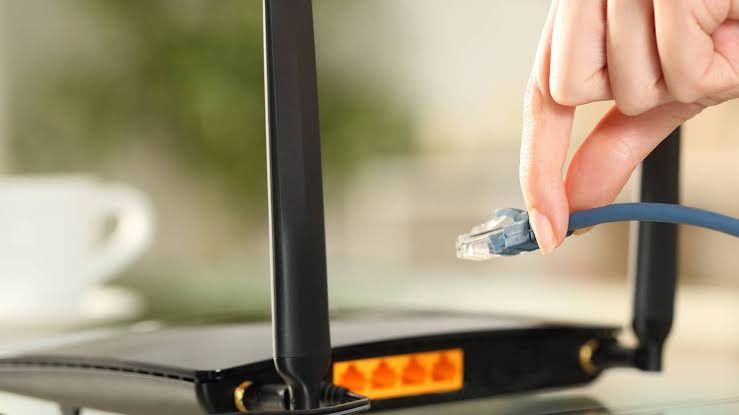What is the difference between the internet and ethernet?
If you always thought that the Internet and Ethernet are synonymous words for one and another, then you have been so wrong. Although these two terms refer to internet access, they are two very different concepts. It is crucial to understand the differences between the Internet and Ethernet, to take advantage of each’s security and speed. Well, of course, we all are familiar with the internet, and luckily we also have many extraordinary Internet services providers available such as CenturyLink for instance, offering faster internet speeds. Ethernet, on the other hand, is a relatively unfamiliar word.
If you are looking for the difference between the internet and ethernet, you are at the right spot. Let’s get started.

Ethernet
Ethernet is a typical method of connecting computer networks via a wired connection. It’s a gadget that connects several devices.
However, it is important to know that these Ethernet-connected devices are close to one another and are frequently housed in the same building; basically, a network that consumes are limited geographic area. It is used for LANs (Local Area Networks).
Ethernet sends data in the form of frames. These frames consist of the source and destination addresses.
Ethernet cable is thicker than a telephone cable and with an RJ45 connector on top.
Internet
The Internet is a digital network that connects computer networks all over the world. It’s a massive web of networks. The TCP/IP protocol is used for data transfer. Users can rapidly exchange information with the help of the internet.
The Internet, on the other hand, is a vast wide-area network (WAN) that allows faraway computers to access information.
The Internet is one of the most essential and powerful communication channels in today’s globe. It has applications in practically every field, including industry, education, medicine, and the media.
Ethernet is a part of the Internet, which is a broad name for computer networks. Both are considered networks for connecting to computers, although their scope differs. Four key differences will help you a better understanding.
Network
The Internet is a wide-area network that spans a large geographical area. Ethernet is a type of LAN (Local Area Network) that covers a small geographic area. They both communicate in various ways. The internet uses point-to-point communication, whereas Ethernet is based on a broadcast network.
Connection
For Ethernet, a cable (coaxial cables or special twisted pairs) is linked from the provider’s station to your PC, router, or modem, and a specialized configuration of the computer’s network card is conducted. The Internet, on the other hand, creates a wireless link.
Security
External devices cannot connect to the network via Ethernet connections. Because Ethernet networks are closed networks, persons from the outside have little or no access to them, they are generally safe. As a result, there are limits in place to prevent unauthorized network access. On the other hand, everyone has free access to the Internet. This means that anyone can use the Internet to get data and information. As a result, whenever you connect to the Internet, you must take extra steps to avoid exposing yourself to security dangers.
Control
Ethernet is easier to control due to its limited connection to the devices. On the other hand, the Internet is a wider phenomenon and therefore harder to control.
When to Use Ethernet?
- When you require the quickest available download and upload speeds.
- When there isn’t a wireless (Wi-Fi) signal available.
- When you need to reduce latency, for instance, when playing online multiplayer games.
- Provides a better and secure connection
When to use the Internet?
- When transmitting data between tablets or laptops in different areas, using Wi-Fi across sites is necessary.
- When you require greater communication between multiple physical locations
- When a wider connection is a necessity over a fast and secure connection.
Pros of Ethernet and Internet
| Ethernet | Internet |
| When compared to a wireless connection, an Ethernet connection provides significantly better speed. | Everyone has the access to any information they require at any time. It has simplified data and information transport. |
| The security of an ethernet connection is higher. You always have control over who uses the network with an ethernet connection. | It has increased communication to the point where somebody sitting in one corner of the globe may easily communicate with someone living on the other side of the globe. |
| Ethernet connections are extremely dependable. This is due to the lack of interference from radio frequencies. | It allows multiple people to communicate with each other over diverse paths all around the world. |
Cons of Ethernet and Internet
| Ethernet | Internet |
| Ethernet connections lack mobility. It has additional physical constraints. When connected over Ethernet, you cannot wander freely. | Due to the lack of security, the number of cybercrimes and frauds has risen at an alarming rate. |
| You can only connect to one computer using a single ethernet connection. If you require extra connections, you’ll need to use more cables. And without the help of an expert, Ethernet connections are often more difficult to set up. | People misuse unlimited access. |
Conclusion
There should no longer be any ambiguity between the terms internet and Ethernet. The Internet is more commonly utilized than Ethernet since it offers more benefits and coverage around the world. However, if a wiring connection is required, Ethernet is without a doubt the preferable alternative. The Internet has connected individuals all over the world and offered new features like email, routers, switching, and wireless networks, among others. It has simplified and made day-to-day chores easier. Things that formerly seemed unattainable can now be accomplished in a matter of seconds or minutes. While it depends on the coverage and the user’s requirements, both have their own set of benefits and limitations.


